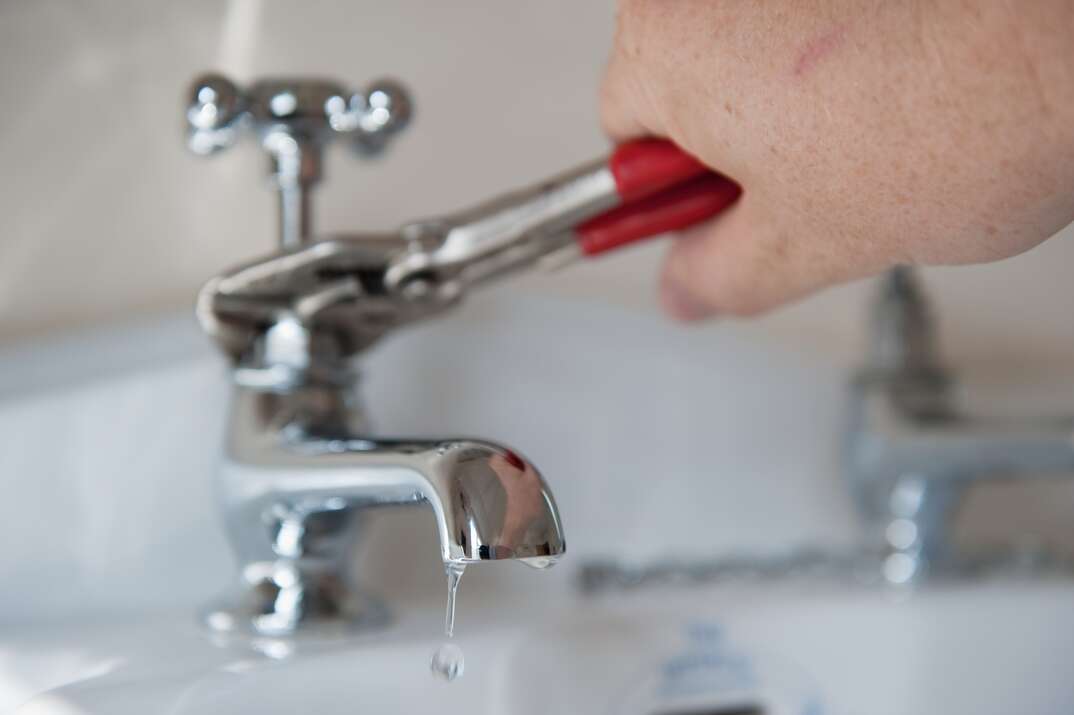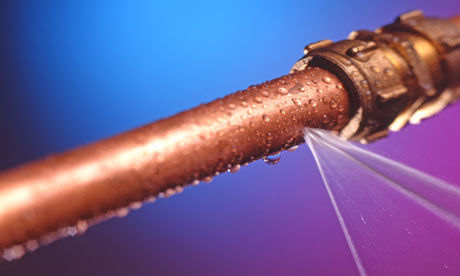We've found the article pertaining to Why Do My Pipes Make Noises listed below on the web and felt it made sense to share it with you here.

To detect loud plumbing, it is important to determine first whether the unwanted sounds happen on the system's inlet side-in other words, when water is turned on-or on the drainpipe side. Sounds on the inlet side have actually varied causes: excessive water pressure, worn valve and faucet parts, incorrectly linked pumps or other home appliances, improperly put pipeline fasteners, as well as plumbing runs consisting of a lot of tight bends or other constraints. Noises on the drain side typically stem from inadequate area or, similar to some inlet side noise, a design including tight bends.
Hissing
Hissing noise that occurs when a faucet is opened slightly usually signals too much water stress. Consult your regional public utility if you think this issue; it will be able to tell you the water stress in your area and also can mount a pressurereducing valve on the incoming water supply pipe if essential.
Thudding
Thudding sound, typically accompanied by trembling pipes, when a faucet or device shutoff is shut off is a problem called water hammer. The sound as well as vibration are caused by the resounding wave of stress in the water, which suddenly has no area to go. Occasionally opening a shutoff that discharges water rapidly into an area of piping including a restriction, joint, or tee fitting can produce the very same problem.
Water hammer can typically be cured by mounting fittings called air chambers or shock absorbers in the plumbing to which the problem shutoffs or faucets are connected. These tools enable the shock wave developed by the halted circulation of water to dissipate in the air they include, which (unlike water) is compressible.
Older plumbing systems may have brief vertical areas of capped pipeline behind walls on tap runs for the very same function; these can eventually loaded with water, decreasing or destroying their performance. The cure is to drain pipes the water system completely by turning off the main water valve as well as opening all faucets. After that open the major supply valve and also close the taps one at a time, beginning with the faucet nearest the shutoff and finishing with the one farthest away.
Chattering or Shrilling
Intense chattering or shrieking that occurs when a shutoff or faucet is switched on, which typically goes away when the fitting is opened completely, signals loosened or defective interior components. The service is to change the shutoff or faucet with a brand-new one.
Pumps and home appliances such as cleaning devices and also dishwashers can move electric motor noise to pipelines if they are improperly linked. Link such things to plumbing with plastic or rubber hoses-never rigid pipe-to isolate them.
Other Inlet Side Noises
Squeaking, squeaking, scratching, snapping, and also tapping typically are brought on by the expansion or contraction of pipelines, usually copper ones supplying warm water. The audios occur as the pipes slide versus loosened fasteners or strike close-by residence framework. You can usually pinpoint the location of the problem if the pipes are subjected; just comply with the audio when the pipes are making noise. Probably you will certainly uncover a loose pipe hanger or a location where pipelines exist so close to floor joists or various other framing items that they clatter versus them. Affixing foam pipe insulation around the pipes at the point of get in touch with must treat the trouble. Make certain bands and also hangers are protected as well as supply ample assistance. Where feasible, pipe fasteners should be connected to enormous architectural components such as structure wall surfaces as opposed to to mounting; doing so decreases the transmission of resonances from plumbing to surfaces that can amplify and also move them. If connecting bolts to framework is inescapable, cover pipelines with insulation or various other durable product where they call bolts, and also sandwich completions of brand-new bolts in between rubber washing machines when installing them.
Fixing plumbing runs that struggle with flow-restricting tight or various bends is a last option that should be undertaken only after consulting a proficient plumbing professional. Sadly, this circumstance is fairly common in older houses that might not have actually been developed with indoor plumbing or that have seen numerous remodels, specifically by novices.
Drainpipe Noise
On the drain side of plumbing, the principal goals are to eliminate surfaces that can be struck by falling or rushing water and to shield pipelines to have inescapable noises.
In new construction, bath tubs, shower stalls, commodes, as well as wallmounted sinks and containers need to be set on or versus resilient underlayments to reduce the transmission of audio with them. Water-saving toilets and also taps are less noisy than standard designs; install them instead of older kinds even if codes in your area still allow utilizing older fixtures.
Drains that do not run vertically to the basement or that branch into horizontal pipeline runs supported at flooring joists or various other framing existing especially problematic noise issues. Such pipes are huge enough to radiate substantial vibration; they likewise carry substantial quantities of water, that makes the situation even worse. In new building and construction, specify cast-iron soil pipelines (the large pipelines that drain commodes) if you can afford them. Their enormity includes a lot of the noise made by water travelling through them. Also, stay clear of directing drains in walls shown to bedrooms as well as areas where individuals gather. Walls having drainpipes ought to be soundproofed as was defined previously, using double panels of sound-insulating fiber board and also wallboard. Pipes themselves can be covered with unique fiberglass insulation made for the function; such pipelines have a resistant vinyl skin (often consisting of lead). Outcomes are not always adequate.
WHY IS MY PLUMBING MAKING SO MUCH NOISE?
This noise indeed sounds like someone is banging a hammer against your pipes! It happens when a faucet is opened, allowed to run for a bit, then quickly shut — causing the rushing water to slam against the shut-off valve.
To remedy this, you’ll need to check and refill your air chamber. Air chambers are filled with — you guessed it — air and help absorb the shock of moving water (that comes to a sudden stop). Over time, these chambers can fill with water, making them less effective.
You’ll want to turn off your home’s water supply, then open ALL faucets (from the bathroom sink to outdoor hose bib) to drain your pipes. Then, turn the water back on and hopefully the noise stops! If you’re still hearing the sound, give us a call to examine further.
Whistles
Whistling sounds can be frustrating, as sometimes the source isn’t easily identified. However, if you can pinpoint which faucet or valve that may be the cause, you’ll likely encounter a worn gasket or washer — an easy fix if you replace the worn parts!Whistling sounds from elsewhere can mean a number of things — from high water pressure to mineral deposits. Your best plan of attack here is to give our plumbing experts a call. We’ll be able to determine where the noise is coming from and what the cause may be, then recommend an effective fix!
Cracks or Ticks
Cracking or ticking typically comes from hot water going through cold, copper pipes. This causes the copper to expand resulting in a cracking or ticking sound. Once the pipes stop expanding, the noise should stop as well.
Pro tip: you may want to lower the temperature of your water heater to see if that helps lessen the sound, or wrapping the pipe in insulation can also help muffle the noise.
Bangs
Bangs typically come from water pressure that’s too high. To test for high water pressure, get a pressure gauge and attach it to your faucet. Water pressure should be no higher than 80 psi (pounds per square inch) and also no lower than 40 psi. If you find a number greater than 80 psi, then you’ve found your problem!
Next step is to give us a call in order to install a pressure regulator. Trust us, you don’t want to wait to resolve this issue. Not only is the sound annoying, but high water pressure can be destructive to your home — including damaging certain appliances, like your washer and dishwasher.
Dripping
You might be accustom to the slow quiet drip your kitchen faucet makes. You might have even tuned out your bathroom sink dripping and drabbing all day long — but it’s time to find its cause.
A slow drip could signify a variety of easy to fix issues, such as a worn out O ring, or loose part. And by ignoring the drip, you could be wasting up to 2,000 gallons of water a year! So start conserving water — get it looked at ASAP.
https://www.pwessig.com/blog/2018/december/why-is-my-plumbing-making-so-much-noise-/

As a passionate person who reads about Why Your Water Pipes Are Noisy and How To Shut Them Up, I was thinking sharing that post was really helpful. Sharing is nice. Helping others is fun. We truly appreciate reading our article about How To Fix Noisy Pipes.
Booking Page